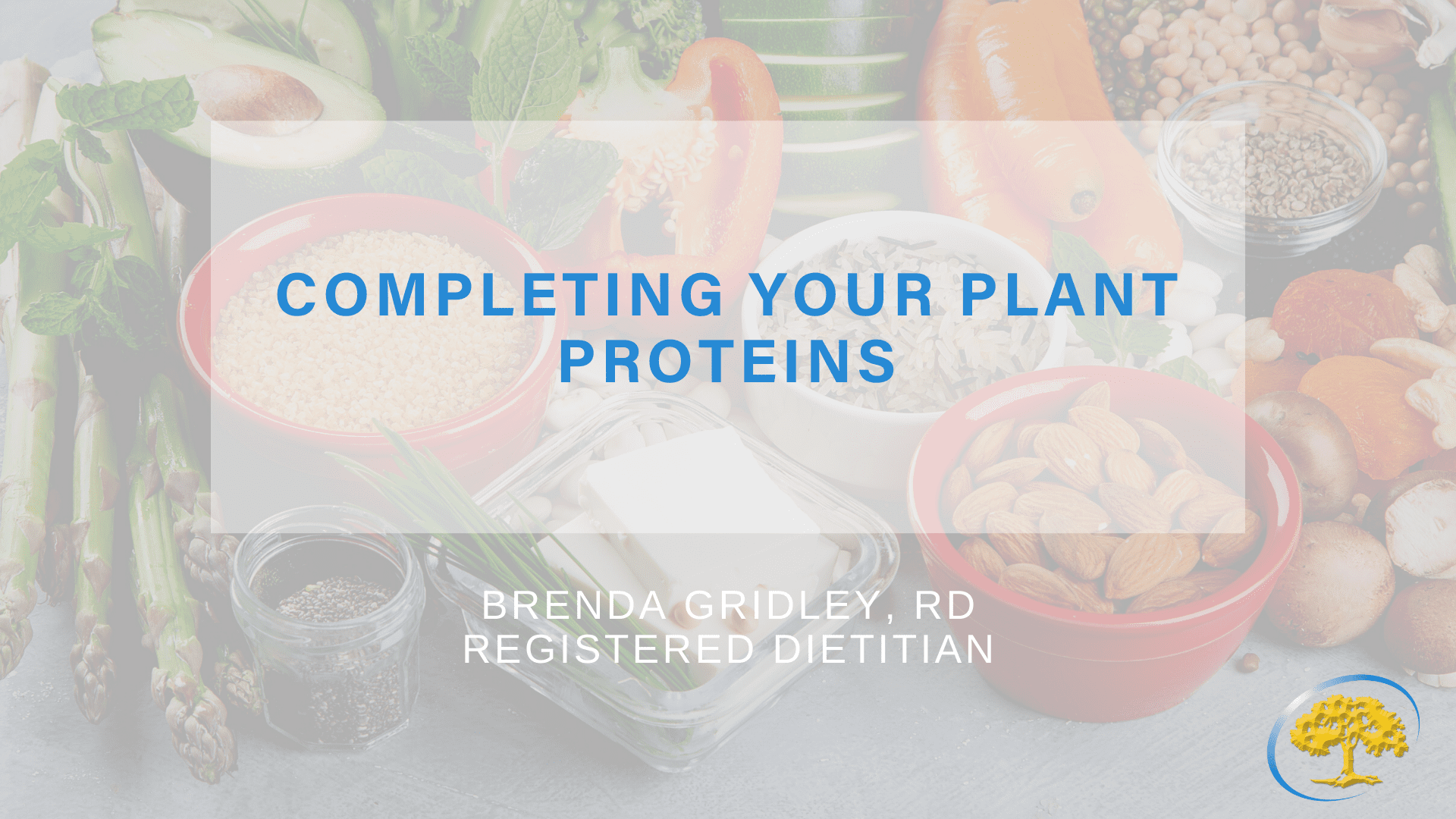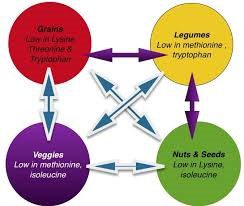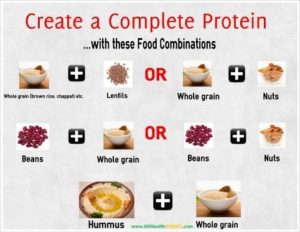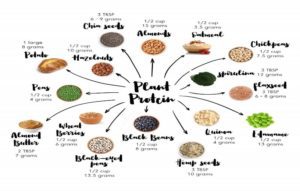
Posted 3 years ago
COMPLETING YOUR PLANT PROTEINS
Adopting a plant-based diet doesn’t mean you need to go completely vegan or vegetarian, rather, it is a way of eating that proportionately chooses consuming more plant-derived whole foods that are unrefined and minimally processed. Vegetables, whole grains, fruits, nuts, seeds, tubers, and legumes are the dietary staples, while animal based foods (fish, meat, poultry, eggs, dairy etc.) make up a small part of the overall diet if you are including them. Plant-based foods are full of vitamins, minerals, that antioxidants, and phytochemicals and provide an abundance of nutrients for your body. There are numerous studies showing positive health outcomes by increasing the amount and variety of plant-based foods in your diet including optimal health, longevity and reduced risk of disease and illness.
However, where to get your protein or getting enough protein can be a challenge for many people considering shifting to a more plant-based diet. Protein needs vary from person to person depending on your age, sex, health, body composition, goals and amount of physical activity or metabolic stress. Your protein requirements can be adjusted for any goals, whether that be overall health and wellness, fat loss or muscle growth. When adopting a plant-based diet there are two things to be mindful of. Firstly, protein digestibility and secondly complete proteins. With a well-structured and varied plant-based diet you can get adequate protein including all 9 essential amino acids. (Histidine, Leucine, Lysine, Methionine, Phenylalanine, Threonine, Valine, Leucine, Tryptophan, Isoleucine and Arginine).
PLANT-BASED VS. ANIMAL PROTEIN SOURCES
The protein digestibility between plant-based foods and animal protein sources differ slightly, with 70-90% digestibility from plant-based foods and 85-100% for animal proteins. When consuming a solely vegan diet, your protein requirements may increase slightly. Aim for creating a complete protein with at least two of your major meals of the day. This will help ensure essential amino acids bioavailable for metabolism, maintenance and repair of the body as it is ever happening.
COMPLETE VS. INCOMPLETE PROTEIN SOURCES
A complete protein is a source of protein that contains all nine essential amino acids. These amino acids are termed “essential” as they can’t be produced by the body, we must get them from dietary sources.
Some plant-based sources of protein are complete proteins, whereas others may be missing one or more of the essential amino acids. These are termed ‘incomplete protein’ sources. Some of the incomplete protein sources can be combined in a meal to create a complete protein. For example – rice and beans – which make a great vegan chili dish or Mexican inspired meal.
However, try not to stress in ensuring every meal has a complete protein source. You simply need to ensure you are consuming a variety of protein sources over the day which will meet your essential amino acid requirements. Include some of the below complete protein sources daily to meet your needs.
COMPLETE PROTEIN SOURCES
(g = grams of protein / per):
- Quinoa, cooked (8g /1 cup)
- Tofu, cooked (8-10g /100g)
- Tempeh, cooked (18g /100g)
- Buckwheat, raw groats (23g /100g)
- Rice & beans, cooked (10-15g /1 cup)
- Soybeans, raw (36g /100g)
- Hemp seeds (11g /30g)
- Chia seeds (4g /2 tablespoon)
- Spirulina (4g /1 tablespoon)
Incomplete Protein Sources:
- Grains (approx. 5g /100g cooked)
- Nuts and seeds (average 6-9g /30g)
- Legumes/beans (average 7-9g /100g)
- Vegetables (Green Peas = 7g /1 cup. Spinach & Broccoli = 3-4g /1 cup)
- Nutritional Yeast (4g /1 tablespoon)
COMBINATION IDEAS TO CREATE COMPLETE PROTEINS INCLUDE:
- Brown Rice and Beans
- Ezekiel Bread (Gluten- this bread is easier on the digestive track because the grains are sprouted.)
- A smoothie with Spirulina (Blue-Green Algae) and nuts
- Salads with any combination beans, nuts or grain
- Soup with any combinations beans or grains
- Get creative creating bowls of all types of grains, vegetables, beans or hummus, with nuts and hempseeds.
- Adding any item from the first list to any meal completes the protein.
Liquid Amino Acids can be used as a supplement to add you meal as well to be sure to get all the essential amino acids. It’s flavor is similar to that of soy sauce.

PLANT BASED EATING THROUGH THE DAY
Breakfast
- Rolled oats with walnuts, banana, and a sprinkle of cinnamon
- Whole wheat English muffin topped with Peanut Butter and banana
- Breakfast Wrap: fill a whole wheat tortilla with black beans, spinach, corn, fresh tomato and avocado slices. Include salsa or hot sauce as preferred.
Lunch
- Tomato basil soup, whole grain crackers with tabbouleh, apple
- Greek salad: chopped mixed greens with fresh tomato, Kalamata olives, fresh parsley, crumbled feta cheese, extra virgin olive oil and balsamic vinegar. Serve with whole wheat pita and fresh melon on the side.
Dinner
- Vegetarian Pizza topped with mozzarella cheese, tomatoes, broccoli, onions, peppers and mushrooms. Strawberries for desert.
- Whole wheat pasta with cannellini beans and peas, side spinach salad with cherry tomato and balsamic vinaigrette.
- Vegetarian Chili with spinach orzo salad
Complete Plant Based Protein Recipes
Vegetarian Black Bean Pasta
INGREDIENTS:
- 9 ounces uncooked whole wheat fettuccine
- 1 tablespoon olive oil
- 1-3/4 cups sliced baby Portobello mushrooms
- 1 garlic clove, minced
- 1 can (15 ounces) black beans, rinsed and drained
- 1 can (14-1/2 ounces) diced tomatoes, undrained
- 1 teaspoon dried rosemary, crushed
- 1/2 teaspoon dried oregano
- 2 cups fresh baby spinach
INSTRUCTIONS:
- Cook fettuccine according to package directions. Meanwhile, in a large skillet, heat oil over medium-high heat. Add mushrooms; cook and stir 4-6 minutes or until tender. Add garlic; cook 1 minute longer.
- Stir in black beans, tomatoes, rosemary and oregano; heat through. Stir in spinach until wilted. Drain fettuccine; add to bean mixture and toss to combine.
Vegetarian Winter Lentil Stew
ingredients:
- 2Tbsp olive oil
- 1yellow onion
- 4cloves garlic
- 4carrots (about 1/2 lb.)
- 4 stalks celery
- 2lbs potatoes
- 1cup brown lentils
- 1tsp dried rosemary
- 1/2tsp dried thyme
- 2Tbsp Dijon mustard
- 5Tbsp soy sauce
- 1Tbsp brown sugar
- 6cups vegetable broth
- 1cup frozen peas
INSTRUCTIONS:
- Dice the onion and mince the garlic. Add the olive oil, onion, and garlic to a large soup pot and begin to sauté over medium heat.
- While the onion and garlic are sautéing, dice the celery, then add it to the pot and continue to sauté. As the celery, onion, and garlic are sautéing, peel and chop the carrots into half rounds. Add the carrots to the pot and continue to sauté.
- As the onion, garlic, celery, and carrots are sautéing, peel and cube the potatoes into 3/4 to 1-inch pieces. Add the cubed potatoes to the pot along with the lentils, rosemary, thyme, Dijon, soy sauce, brown sugar, and vegetable broth.
- Briefly stir the ingredients to combine, then place a lid on the pot, turn the heat up to high, and bring the stew up to a boil. Once it reaches a boil, turn the heat down to low and let it simmer for 30 minutes, stirring occasionally.
- Toward the end of the simmer time, when the potatoes are very soft, begin to mash the potatoes a bit as you stir. This will help thicken the stew.
- Finally, after 30 minutes, stir in the frozen peas and allow them to heat through. Salt as needed.


